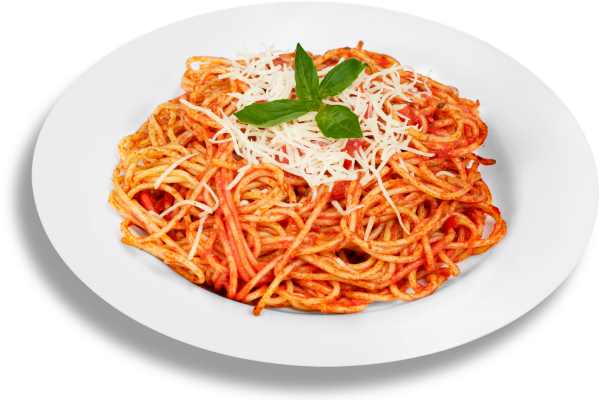Italy is a country renowned for its rich history, beautiful landscapes, and, most notably, its exquisite cuisine. For new Italian citizens, discovering Italy through food is an immersive way to connect with the country’s culture and traditions. This guide will explore various aspects of Italian cuisine, from regional specialties to traditional meals, and provide insights into the cultural significance of food in Italy.
The Importance of Food in Italian Culture
A Culinary Tradition
Italian cuisine is more than just a collection of recipes; it is a reflection of the country’s history, geography, and social customs. Each region of Italy boasts its own unique dishes and cooking methods, shaped by local ingredients and historical influences.
Family and Community
In Italy, food is a central part of family life and social gatherings. Meals are often enjoyed together, with an emphasis on savoring the experience and fostering relationships. This communal aspect of dining is deeply ingrained in Italian culture and is a key part of the Italian way of life.
Regional Specialties
Northern Italy
Northern Italy’s cuisine is known for its rich and hearty dishes. The use of butter, cream, and cheese is prevalent, resulting in creamy risottos and flavorful polentas.
Risotto alla Milanese
Originating from Milan, Risotto alla Milanese is a creamy rice dish made with saffron, giving it a distinctive yellow color. It is often served as a primo piatto (first course) in Northern Italy.
Polenta
Polenta, a staple of Northern Italian cuisine, is made from cornmeal and can be served in various forms, from soft and creamy to firm and grilled. It pairs well with rich meats and sauces.
Central Italy
Central Italy, including Tuscany and Umbria, offers rustic and robust flavors. Olive oil, garlic, and fresh herbs are commonly used in the region’s dishes.
Bistecca alla Fiorentina
Bistecca alla Fiorentina is a traditional Tuscan dish featuring a large, thick-cut T-bone steak, typically grilled over a wood fire and seasoned simply with salt, pepper, and olive oil.
Ribollita
Ribollita is a hearty Tuscan soup made with leftover bread, beans, and seasonal vegetables. It is a perfect example of “cucina povera,” or peasant cooking, which emphasizes making the most of simple ingredients.
Southern Italy
Southern Italian cuisine is characterized by its bold and vibrant flavors, with a focus on tomatoes, olive oil, and fresh seafood.
Pasta alla Norma
Originating from Sicily, Pasta alla Norma is a beloved dish made with eggplant, tomatoes, basil, and ricotta salata cheese. It is a testament to the region’s abundant fresh produce.
Pizza Margherita
Pizza Margherita, a classic from Naples, features a thin crust topped with tomatoes, mozzarella, and basil, representing the colors of the Italian flag.
Traditional Italian Meals
Breakfast (Colazione)
Italian breakfast, or colazione, is typically light. Common items include espresso or cappuccino paired with a pastry, such as a cornetto (similar to a croissant).
Lunch (Pranzo)
Pranzo, the main meal of the day, is usually enjoyed in the early afternoon and often consists of multiple courses.
Antipasto
The meal often begins with antipasto, a selection of appetizers that may include cured meats, cheeses, olives, and marinated vegetables.
Primo Piatto
The primo piatto is the first course, usually featuring pasta, risotto, or soup. This course highlights Italy’s love for carbs and rich flavors.
Secondo Piatto
The secondo piatto is the main course, typically consisting of meat, poultry, or fish, accompanied by a contorno (side dish) of vegetables or salad.
Dolce
Dessert, or dolce, is a sweet way to end the meal. Popular options include tiramisu, gelato, and panna cotta.
Dinner (Cena)
Cena is a lighter meal compared to lunch, often consisting of one or two courses. It is typically enjoyed later in the evening.
The Role of Food in Social Integration
Cooking Classes
For new Italian citizens, participating in cooking classes can be an excellent way to learn traditional recipes and cooking techniques. These classes offer hands-on experience and insight into the cultural significance of various dishes.
Food Festivals
Italy hosts numerous food festivals, known as sagre, throughout the year. These festivals celebrate local specialties and offer a unique opportunity to experience regional culinary traditions.
Sagra della Castagna
The Sagra della Castagna (Chestnut Festival) is a popular autumn event in many parts of Italy, celebrating the chestnut harvest with various chestnut-based dishes and desserts.
Festa della Polenta
The Festa della Polenta (Polenta Festival) showcases the versatility of polenta, with different variations served alongside meats, cheeses, and vegetables.
Embracing Italian Food Culture
Shopping at Local Markets
Shopping at local markets is a quintessential part of Italian life. These markets offer fresh, seasonal produce, meats, cheeses, and other ingredients, allowing you to connect with local farmers and vendors.
Cooking at Home
Cooking at home is a cherished tradition in Italy. Embracing this practice allows new citizens to experiment with Italian recipes and create meals that bring family and friends together.
Sharing Meals
Sharing meals with family and friends is a cornerstone of Italian culture. Inviting others to join you for a meal fosters a sense of community and strengthens social bonds.
The Health Benefits of Italian Cuisine
The Mediterranean Diet
Italian cuisine is a key component of the Mediterranean diet, which is associated with numerous health benefits, including reduced risk of heart disease, improved cognitive function, and overall longevity.
Fresh Ingredients
The emphasis on fresh, seasonal ingredients in Italian cooking ensures that meals are not only flavorful but also nutritious. This approach promotes overall health and well-being.
Conclusion
Discovering Italy through food is a journey that new Italian citizens can cherish and enjoy. From the diverse regional specialties to the traditional meals that bring families together, Italian cuisine offers a rich tapestry of flavors and cultural significance. By embracing the culinary traditions of Italy, new citizens can connect with their heritage, foster community ties, and enjoy the many health benefits of the Mediterranean diet. Buon appetito!



